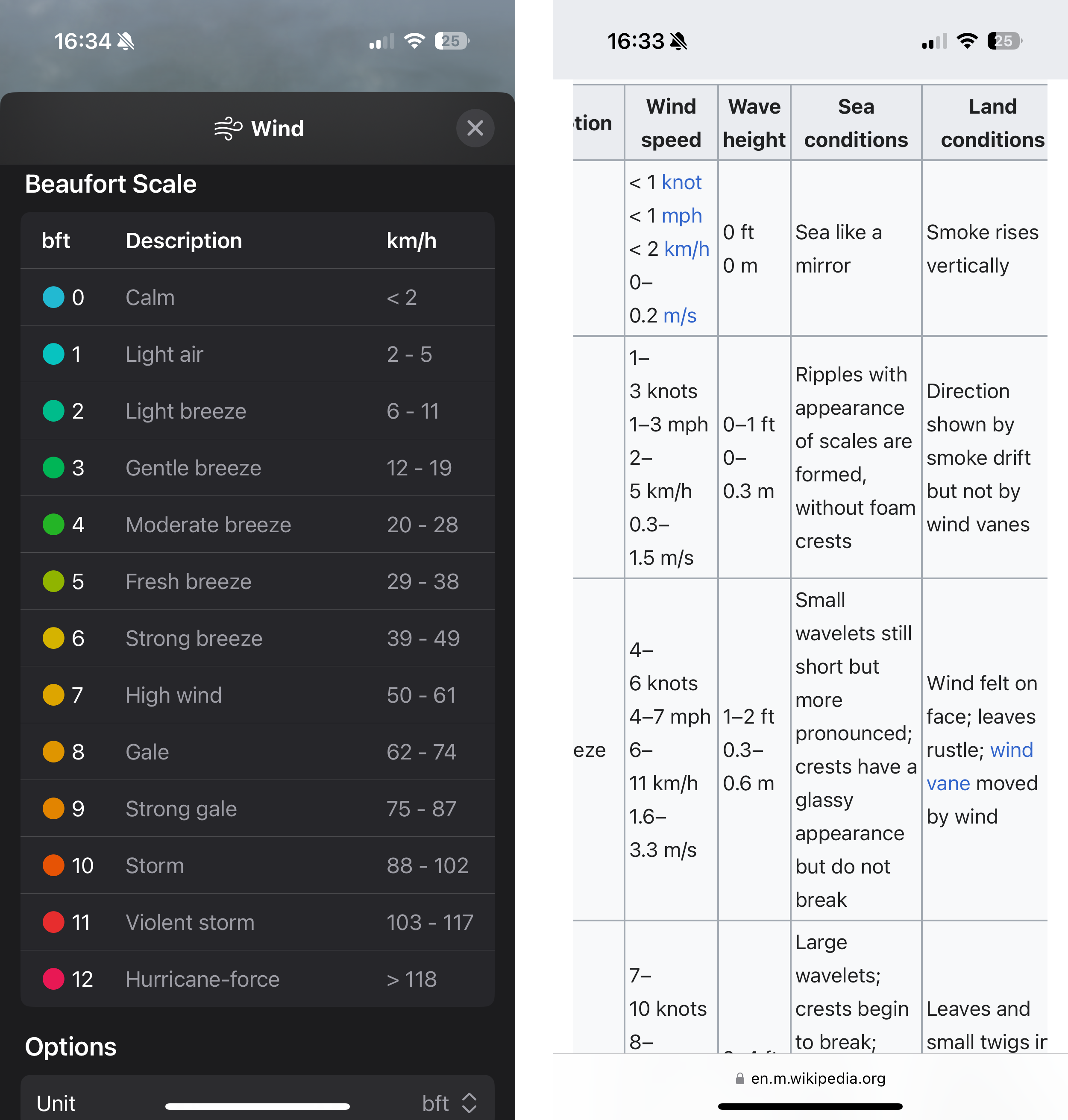Measurement of Discernible Differences
Wind is like pornography: I know it when I see it. I recognize wind on my face as a “Light Breeze”, I understand a “Moderate Breeze” passes by when loose paper is lifted in the air, and I know a “Moderate Gale” when it inconveniences me in my walk.
Likewise, tell me that I will have a hard time using an umbrella and I’ll think twice about leaving my apartment. But tell me that the wind’s speed is 45km/h and I’ll think twice about what that means.
The human experience of wind imparts the Beaufort wind force scale its clarity. By relating to shared observations, Beaufort made something as intangible as wind tangible. The resulting Beaufort scale classifies wind speeds into categories from 0 to 12. Each category corresponds to an observable wind condition, from 0 (wind so calm it allows smoke to rise vertically) over 6 (the aforementioned struggle with an umbrella) to 12 (the not-shared-by-everyone experience of devastation by a hurricane).
The Beaufort scale makes up in intuition, what it lacks in precision. Thus, not surprisingly, meteorologists held their anemometer up in the air to measure the exact speed at which wind provides umbrellas the strength to drag pedestrians along the sidewalk. Their measurements translated the human experience into units, and now Apple’s Weather app displays the wind speed in km/h by default. Only if you look for it will Weather offer a conversion to Beaufort’s categories.
What you’ll find is a conversion table that prioritizes order and space over comprehensiveness.1 The table does not list the categories’ observation-based definitions. Weather strips away what differentiates the Beaufort scale from common units found on a car’s speedometer. Limited by your phone screen’s horizontal width, something had to give. You’re left with a three-column table listing a number on the left, a number on the right, with 2 storms, 2 gales, and 5 breezes in the middle. Reverse the priorities and you get Wikipedia’s version of the table.

Usefully, though, Apple’s Weather app does provide an option to translate wind speeds2 from km/h to bft in most of its UI elements. Which, now that I am familiar with the categories, is the level of detail I look for when I check the weather in the morning. The Weather widget showing 1bft promises a nicer day than, say, 4bft. At 6bft I will pull up my hood and leave my umbrella at home.
A change in Beaufort category from one day’s forecast to the next foretells that the weather will feel different from the day before. A change in wind speed by 1km/h, however, I will neither feel nor see, and thus not know.